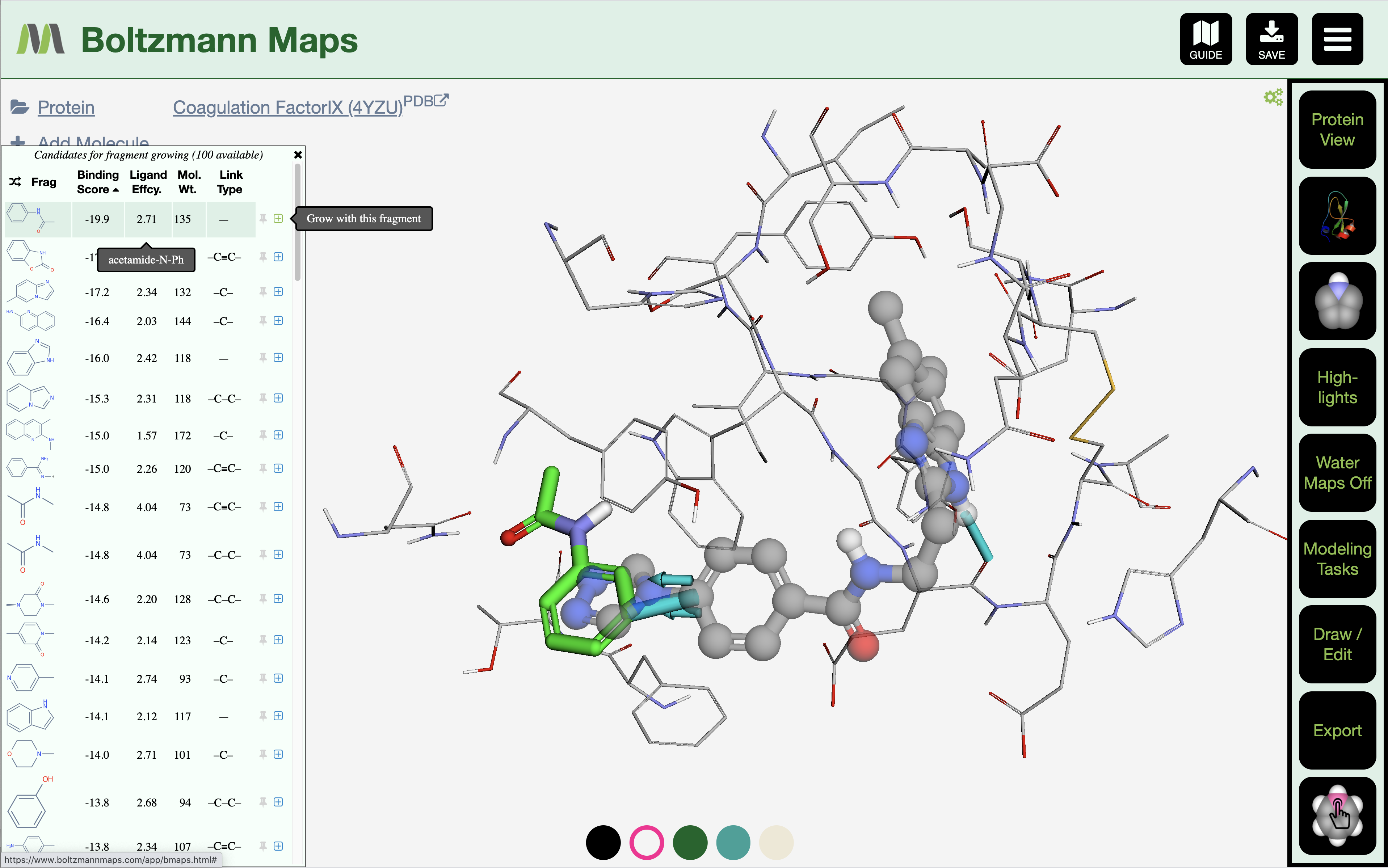Technology Overview
The BMaps web app is designed to make access to molecular modeling easy. As such it incorporates software to automate the use of tools such as docking (Autodock Vina) and energy minimization. BMaps has several components implemented as either browser-based software or AWS-hosted web services.
The BMaps web client builds upon 3Dmol.js for 3D molecular visualization of proteins and compounds of interest to the user. BMaps provides highlights of molecular interactions such as hydrogen bonds, hotspots derived from fragment clustering, and, of particular note, water binding maps. It includes molecule editing in both 2D and 3D.

The BMaps web services include a number of technologies purchased by Conifer Point that were developed by an earlier company, BioLeap, Inc., such as managing, visualizing, and searching fragment maps, and molecule assembly. The web services are highly scalable to support both a large number of users and their computations for fragment search, docking, etc.
Also acquired, and developed at BioLeap, was a high-performance Monte Carlo simulator (BMOC) for modeling protein-fragment and protein-water interactions using a technique called simulated annealing of chemical potential. This simulator has been used on a large scale (100,000’s of fragment simulations) on AWS using a simulation management system optimized for this application. With the BMaps web app, a user can initiate water or fragment simulations on their own structures or fragments, and then use that data in the web app design tool.